The fourth world champion, José Raul Capablanca once said: “The study of the game must begin with the endgame”. In this article, we’re going to explore the basics of this phase of the game, so that you have a firm base of knowledge and no longer fear the dreaded endgames.
Endgame Concept: King’s Activity
When we are in the middlegame, we are always concerned about our king’s safety. However, when there are not many pieces on the board, the king can (and should!) participate in the game. The easiest way to do this is to bring the king closer to the center, as the following example shows.
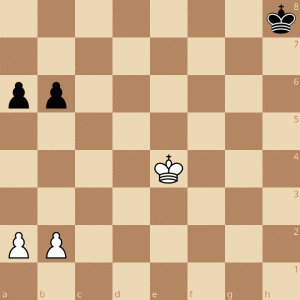
Here you can see the difference between the power of Kings. White will get to the queenside faster thanks to the King being centralized.
In our next example, we see a classic ending from the legend of Akiba Rubinstein.
Cohn, Erich – Rubinstein, Akiba
St Petersburg Chigorin Memorial St Petersburg (10), 28.02.1909
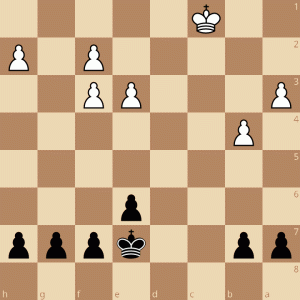
Here the important elements of the endgame start to come together. White has an inferior structure (three pawn islands against two). But how can Black use the slightly more active king? Targeting weaknesses! And in this position, White’s most visible weakness is the h2 pawn. Black started with 25…Kf6!
See how Rubinstein converted his active king and superior pawn structure:
Endgame Concept: Activate Your Pieces as Much as Possible
As with the King, piece activity is extremely important in endings, no matter what the ending is. For example, in Rook endings, an essential concept is: Keep your Rook active, no matter if you have to sacrifice material (one pawn or even two!).
Artur Yusupov – Mikhail Tal
47th USSR Championship Minsk URS (14), 12.1979
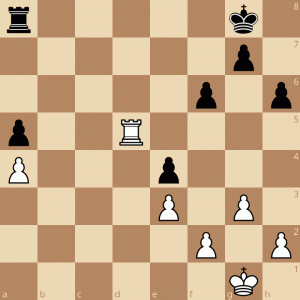
We can compare the function of each Rook. White’s rook is more active, controls more squares, and attacks Black’s a5-pawn. The black rook, on the other hand, controls fewer squares and has a passive function, only defending the a5-pawn. In this assessment, White’s Rook has more activity than Black’s Rook, so it has the advantage in this endgame.
The continuation of the game only confirms this:
Endgame Concept: Healthy pawn structure
In endgames, it is very important that our pawn structure is not too weakened (the Cohn-Rubinstein game already showed us an example of how dangerous it is to have a weakened structure). Now a thematic example, which also shows us how to make a connection between openings and endgames.

This pawn structure is very typical of the Exchange Variation of Ruy Lopez (1.e4 e5 2.Nf3 Nc6 3.Bb5 a6 4.Bxc6). White has a pawn majority on the kingside, and Black has a weakened majority (due to the doubled pawns) on the queenside. This is the dream of every player who plays this variant: White is completely won, as he will be able to create a passed pawn (a theme that happens in every ending: Always try to create a passed pawn!) on the kingside, and black does not. For example:
Endgame Concept: Limit the activity of the opponent’s pieces
Naturally, we don’t play chess alone. We have an opponent in front of us. We need to fight our opponent’s pieces at all times, and finals would be no different. The example below is very instructive.
Hort, Vlastimil – Ciocaltea, Victor
Budapest Centenarium Budapest (6), 19.02.1973
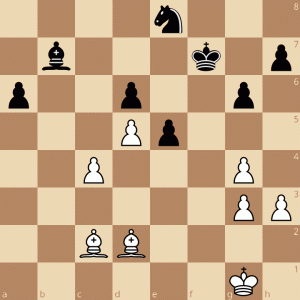
White’s position is superior. It has the superior pawn structure (since the a6 pawn is weak and d6 is easily attackable), and it has the bishop pair. But White further worsens Black’s position by preventing Black’s pieces from entering the game with 32.g5! Limiting Black’s knight even more. 32…Bc8 33.g4 Now all Black’s pieces are completely constrained.
Black’s suffering did not last long:
Endgame Concept: Exploiting weaknesses
Directly connected with the previous topic, we need to place our pieces on the most active squares possible! Usually, the best way to do this is to place the piece on a weak square (a square that is no longer defended by pawns) or by attacking a weak point in the opponent’s position. The following classic example illustrates this very well.
Alekhine, Alexander-Yates, Frederick Dewhurst
British CF–15 London International London (10), 12.08.1922
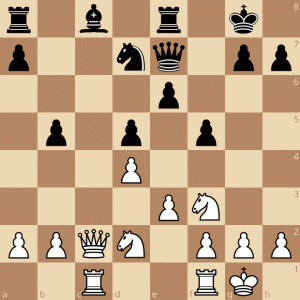
We are not yet in an endgame, but many details of this position end up emerging at the end of this game. It’s pretty clear here that White’s position is superior. Black has many weaknesses on the black squares (c5 and e5 especially), the Bishop on b7 is limited by his pawns and White has complete control of the c-file. 15…a5 16.Nb3 To explore the c5-square. 16…a4 17.Nc5 Nxc5 18.Qxc5 Qxc5 19.Rxc5

We arrived at the endgame. Note how all the white pieces are superior to the black ones.
Grab a coffee and see how Alekhine put all the pieces in the game and the opponent just couldn’t do anything:
So, in summary, what we can highlight is:
- Place all your pieces in the best possible positions (usually close to the center or completely centered, but in some cases, the corner of the board helps a lot, as in the Cohn-Rubinstein example);
- Just as you must fight to place your pieces in the best possible positions, fight so that your opponent cannot do this (at all stages of the game, it is important to pay attention to your opponent’s ideas);
- Always look for the weaknesses your opponent has (be it the weak squares you can place a piece on, or a weak pawn you can attack);
- Put it all together! The Alekhine-Yates example shows all these elements.
I hope this article has given you a lot of ideas on how to play the endings and helps you win more games! And now that you know the most common principles in endgames, how about improving your positional game? See you in the next article.